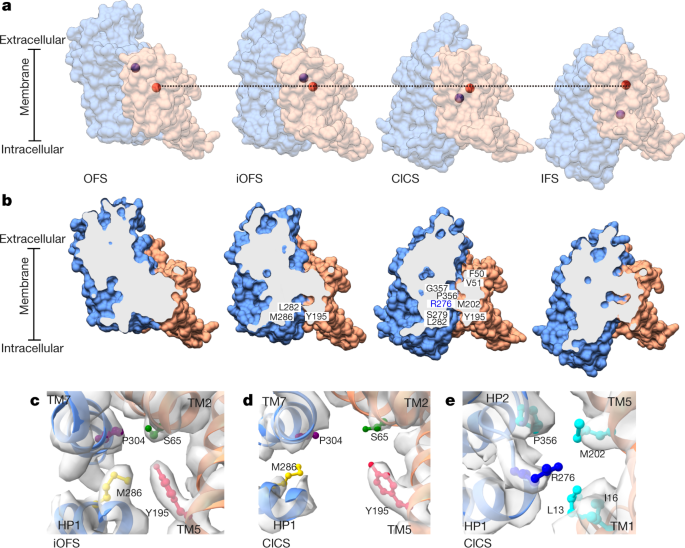In a new study, researchers from the University of Sydney in Australia and the University of Illinois at Urbana Champaign reveal the shape of one of the most important molecular machines in our cells, the glutamate transporter, which helps to explain how our brain cells communicate with each other. The related research results were published online in Nature with the title of “Glutamate transporters have a chloride channel with two hydrophobic gates”.
Glutamate transporters are tiny proteins on the surface of all our cells. They can turn on and off chemical signals and play an important role in ensuring the smooth progress of all cell to cell dialogue. They are also involved in neural signal transduction, metabolism, learning, and memory.
These researchers used cryo-EM to capture the structure of glutamate transporters in great detail, and the results showed that they looked like “twisted elevators” embedded in the cell membrane.
This discovery, which is the first in the world, opens up a new field of possibility: To study whether the defect of glutamate transporter may be the cause of nervous system diseases such as Alzheimer’s disease.
“I was surprised when I first saw this image,” said Ichia Chen, a Ph.D. student at the University of Sydney, co-author of the paper. “It reveals how glutamate transporters work and explains previous years of research.”

Multi-task Glutamate Transporter
By using cryo-EM to analyze thousands of images trapped in thin ice, the researchers were able to “photograph” the structure of glutamate transporters.
Cryo-EM is a highly sensitive microscope, which makes this study possible. It uses an electron beam to photograph biomolecules, making things invisible to the naked eye visible.
These results also confirm what scientists have speculated for some time: glutamate transporters are multitasking. “Using cryo-EM, we have revealed for the first time how glutamate transporters are multitasking – they perform a dual function of moving chemicals (such as glutamate) across the cell membrane while allowing water and chloride ions to pass through at the same time. These molecular machines use a very twisted elevator-like mechanism to move their cargo across the cell membrane. But they also have an extra function: they allow water and chloride ions to pass through the cell membrane. We have been studying this dual function for some time, but we have never been able to explain how glutamate transporters do this before. Using a combination of technologies including cryo-EM and computer simulation, we have captured this rare state, and we can observe that these two functions occur simultaneously.”
“Understanding how these molecular machines work in our cells allows us to explain their defects in the state of disease, and gives us clues on how to use drugs to target these molecular machines,” said Professor Ryan
The Key to Bridging the Defects in Diseases
Mapping the detailed structure of glutamate transporters is an important tool for people to understand how our body works and the underlying mechanisms of some diseases.
Defects in glutamate transporters are associated with many neurological diseases such as Alzheimer’s disease and stroke. It also includes rare diseases, such as episodic ataxia, which affects movement and leads to periodic paralysis, caused by uncontrolled leakage of chloride ions through glutamate transporters in brain cells.
“Understanding the structure of glutamate transporters, which control the normal flow of chloride ions, may help to design drugs that ‘block’ this chloride channel in ataxia,” said co-author Dr. Qianyi Wu of the University of Sydney.
The Fruits of Teamwork
This paper is the result of seven years’ research work by Australian and American researchers. The study also highlights the importance and potential of high-resolution microscopy for understanding biological processes.
Dr. Josep font of the University of Sydney, co-author of the paper, said, “we are really pleased to be able to use the new glisios cryo-EM at the University of Sydney’s microscope and microanalysis facility in Sydney. The opportunity to use this microscope ‘in-house’ will accelerate our research and understanding of these important molecular machines.”
Reference
Ichia Chen et al. Glutamate transporters have a chloride channel with two hydrophobic gates. Nature, 2021, doi:10.1038/s41586-021-03240-9.